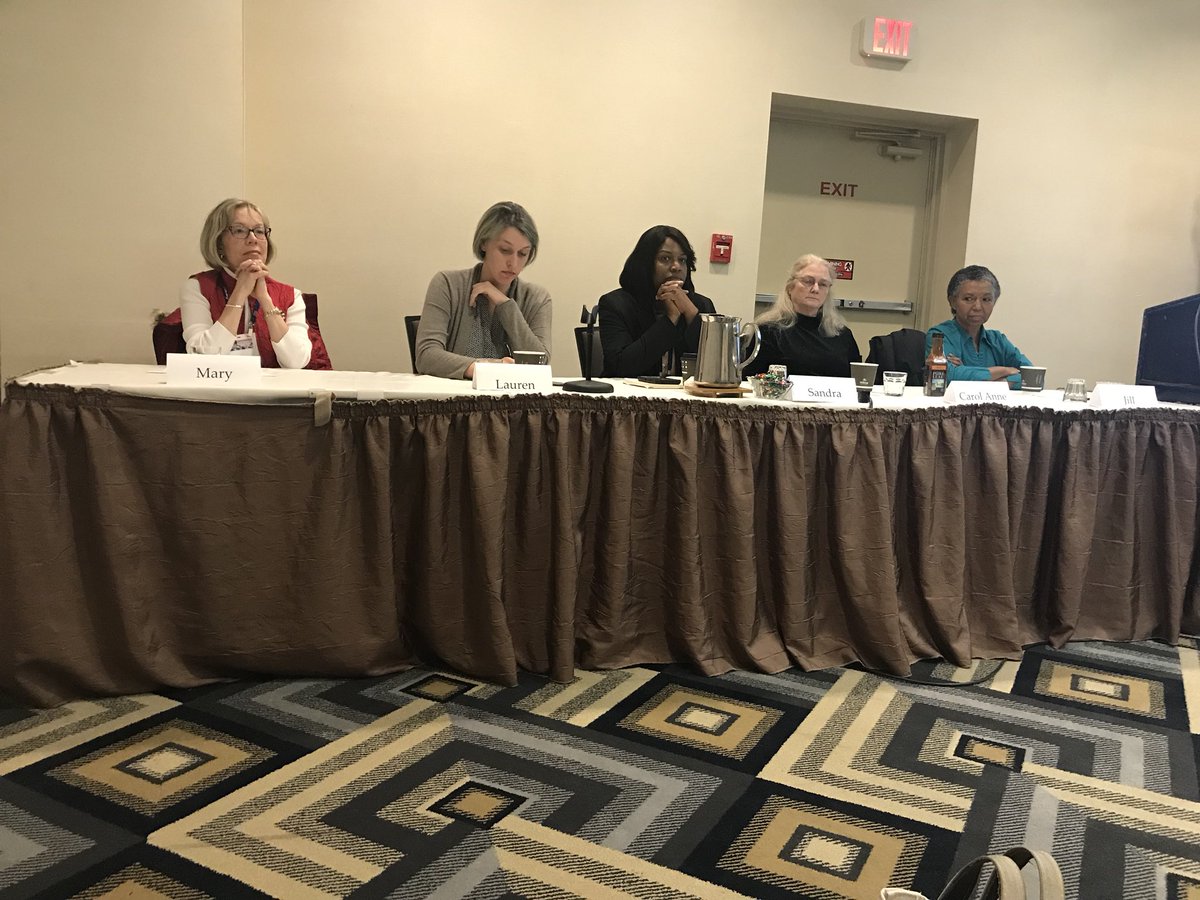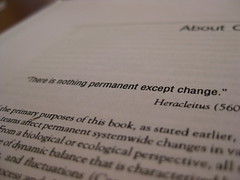Ashley Sands, IMLS - Moderator
This panel was asked to look foward.
Kate Zwaard, Library of Congress - she works in the National Digital Initiatives Division
She has four broad points (her ideas):
- Modern manuscript collections - ephermal manuscripts in ephermal media. The platforms are evolving faster than we can understand how to archive them. Personal digital archives is part of this. Education is not the answer. There needs to be a tech solution.
- Libraries as Platform - We need to involve users more centrally in conversations about this. Are we presenting data in ways that are useful. New or complex metadata standards are barriers to use.
- The problem of scale - As we scale up, how do reconfigure the structure of our institutions and our field to support this. How can collaborations occur in a peer to peer basis? How do we blend the wisdom of cataloguers, the wisdom of the crowd, and technology?
- Skills building and our patron base - She notes a benefit of demonstration projects and the need to promote the work that is similar to what are users are doing.
Loretta Parham, Atlanta University Crnter Woodruff Library - She talked about the progression of projects. A small digital project to a larger one to preserving institutional digital records to scholarly record to audio/video digitization to a project for GLAM (galleries, libraries, archives and museums). Working to create object-based learning pedagogy.
In terms of need, need IMLS to exist and to thrive. Need grants to smaller and minority institutions. Small institutions need help acquiring skills that they do not have in house. Institutions need help understanding how to reorganize to take advantage of opportunists. Need conferences/events where like institutions are the majority of the attendees. Continuing education is important. The effectiveness of collaboration needs to be taught. They need help in policy development, especially with born digital and records management. They need the support of public programs so that content is used.
Chris Bourg, MIT - The biggest ROI is on shared solutions to shared problems, e.g., community source software development. The challenge is that you need expertise in staff during the development. Be willing to let go of an obsession with quick wins. Be willing to make long term, patient investments. We need to invest in ways to make our content usable in ways we cannot anticipate. MIT is making hackable libraries, which means people can use them how they want to use them. Finally, what are the challenges that libraries have and how can others help? For example, MIT imaging technology that can read through closed books. Right now the tech can only read through nine pages. How cool would it be to digitize books without opening them? Having that in portable technology would be a game changer.
Cliff Lynch, CNI - He noted the report that IMLS produced on the “National Digital Platform at Three.” He sees similarities between what IMLS is doing/funding and other efforts (e.g., DPLA). What is on the cusp of big wins? He mentioned several things including open educational resources (OER). Concerns? Sustainability. Small institutions with limited resources. Privacy. The life cycle of scholarly work. Big data and especially in museums and scientific collections. Preservation, e.g., ebooks. News archiving. Social media and personalization. Do we need to rethink how we do archiving in these areas? In the move to digital, libraries are systematically getting squeezed out of content.
Q&A:
Jim Neal - The impact of policy issues that are or will be made at the federal level, e.g., copyright, privacy, network neutrality, etc. Not to speak of federal funding for libraries.
Cliff - What Jim said! The NDP can have an impact on these issues.
Question - The need for communities of action. We need investment of time and resources. However, funding for those cannot currently occur though grants. How can we encourage the funding landscape to change to meet our needs?
Chris - It is a sociological conundrum. We need to be clear about vision and mission, and use those to build trust so people will work together for a common purpose. However, we don’t have a common agreement on what our missions are. We are in the middle of disruptive change. If your mission is to serve your primary community, you will need do the things your community needs for the long term.
Kate - We need to come together with a shared goal and purpose that is achievable.
Cliff - Reuse of data is overly simplified. Some data cannot be made open. Libraries are often uncomfortable with content whose sharing must be limited.
Katherine Skinner - We do not have funding for the glue. For that which will hold us and our collaborative efforts together.
Mark Parson - The successful networks are tied to big infrastructure. What can we do to insure that all data networks are tied to infrastructure?
Erin - People love core facilities. Most research core facilities are domain specific. Libraries cross disciplines. What would a core facility for libraries look like? How could we do?
Kate - She noted the importance of ebook usability. It is what she believes our users would want us to work on.
Ashley - How do measure if something is sustainable or not?
Cliff - Sustainable to some extent is related to up-take. If enough people are using something, we can figure out how to sustain it. How do you predict sustainability in advance? Many funders struggle with this.
Loretta - We sustain a lot of stuff that we should not be sustaining. We need to change what we’re doing.
Chris - We have no idea what the sustainable business model is for open access publishing.
Kate - We need to turn things off when they need to be turned off. We all have a pilot that last too long.
Ashley - What is. A grand challenge that is pressing?
Chris - Digital preservation
Kate - Getting the word out about our collections
Loretta - Isn’t someone working on a list of all these things?
Chris - MIT is going to have a summit on what the grand challenges are and develop white papers. Open scholarship, digital preservation, and discovery. Imagine a discovery device that mimics how we think.
Comment - Metadata and discovery. Linked data. Interoperability.
Question - We spend a lot of time looking at discovery. It isn’t about discovery, but about getting to that “thing.” It is about getting to stuff, which is in different systems, networks, etc. what do we call this? It is the same problem as the number of clicks to download an ebook.
Chris - Known item searching. The sense of anxiousness that faculty are missing things related to their research. Can you help me find what I don’t know I’m looking for?
Loretta - Can the information find you?
Chris - How do we do personalization and still respect privacy?
Ashley - one more remark...
Kate - It has been an insightful day.
Loretta - How do we make mileage on solving some of these thing? Let’s not forget those with limited resources.
Chris - How can we use our resources for the public good, but in a way that allows for the library to center itself and its perspective?
Cliff - We spend a lot of time worrying about improving technical skills. We also need to deal with imparting the judgment and knowledge about how to make decisions about the responsible use of technology.
Concluding Remarks: Robin Dale, IMLS
- She noted the importance of our input, questions and answers
- Glad to see familiar face and thrilled to see new voices and hear new voices
- What’s next?
- Grand challenge?
A report due in early 2018.


 On Dec. 14, the U.S. Federal Communications Commission (FCC) will vote to restore
On Dec. 14, the U.S. Federal Communications Commission (FCC) will vote to restore 


